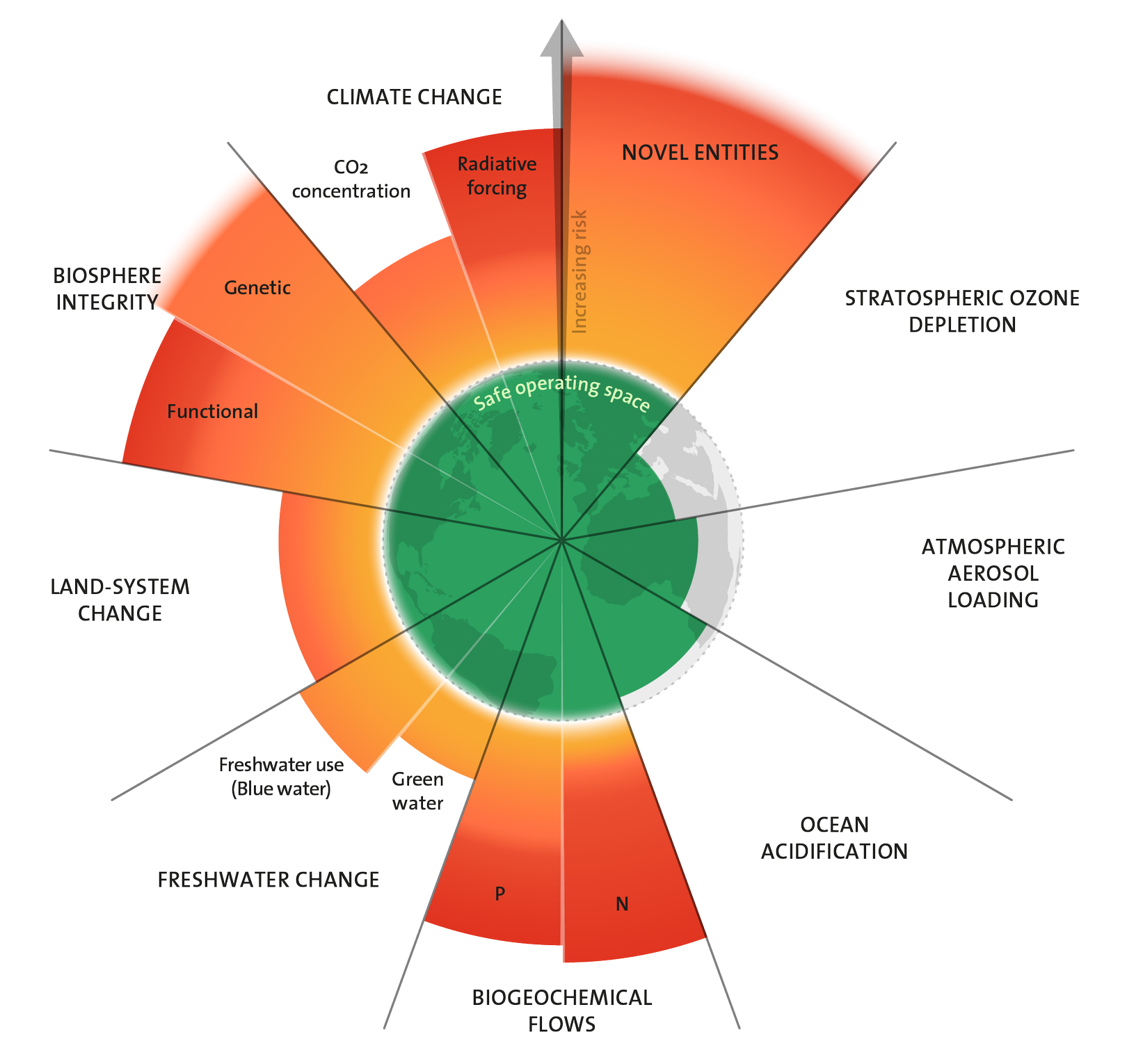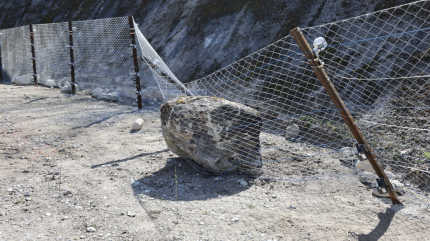Sign up for daily news updates from CleanTechnica on email. Or follow us on Google News!
In 2009, Johan Rockström, the head of the Stockholm Resilience Center, and a group of 28 internationally renowned created the planetary boundaries concept — a set of nine planetary boundaries within which humanity can continue to develop and thrive for generations to come.
Planetary boundaries are a framework to describe limits to the impacts of human activities on the Earth system. Beyond these limits, the environment may not be able to self-regulate anymore. This would mean the Earth system would leave the period of stability of the Holocene, in which human society developed.
Crossing a planetary boundary comes at the risk of abrupt environmental change. The framework is based on scientific evidence that human actions, especially those of industrialized societies since the Industrial Revolution, have become the main driver of global environmental change. According to the framework, “transgressing one or more planetary boundaries may be deleterious or even catastrophic due to the risk of crossing thresholds that will trigger non-linear, abrupt environmental change within continental-scale to planetary-scale systems.” To the extent these Earth system boundaries have not been crossed, they mark the “safe zone” for human societies on the planet.
Nine Planetary Boundaries
According to Wikipedia, the nine planetary boundaries as defined by Rockstrom and his colleagues are:
- climate change — CO2 concentration in the atmosphere < 350 ppm and/or a maximum change of +1 W/m2 in radiative forcing
- ocean acidification — mean surface seawater saturation state with respect to aragonite ≥ 80% of pre-industrial levels
- stratospheric ozone depletion — less than 5% reduction in total atmospheric O3 from a pre-industrial level of 290 Dobson Units
- biogeochemical flows in the nitrogen cycle — limit industrial and agricultural fixation of N2 and phosphorus
- global freshwater use — < 4000 km3/yr of consumptive use of runoff resources
- land system change — < 15% of the ice-free land surface under cropland
- the erosion of biosphere integrity — an annual rate of loss of biological diversity of < 10 extinctions per million species
- chemical pollution — introduction of novel entities in the environment
- atmospheric aerosol loading — no standard currently in place.

Credit: “Azote for Stockholm Resilience Centre, based on analysis in Richardson et al 2023.”
Climate Scientists Weigh In
A recent study led by professor Katherine Richardson of the University of Copenhagen examined those nine planetary boundaries and reviewed over 2000 climate studies. The climate scientists concluded that 6 of the boundaries have been breached, suggesting the onset of a period of major instability for humanity. There report is extensive and was published in the journal Science Advances.
You, gentle reader, are encouraged — make that urged — to read the report yourself. What follows is a condensed version that will necessarily leave out certain important details that provide context to the findings. Here is a portion of the abstract of the report:
“This planetary boundaries framework update finds that six of the nine boundaries are transgressed, suggesting that Earth is now well outside of the safe operating space for humanity. Ocean acidification is close to being breached, while aerosol loading regionally exceeds the boundary. Stratospheric ozone levels have slightly recovered. The transgression level has increased for all boundaries earlier identified as overstepped.”
The report goes on to say of the “nine processes that are critical for maintaining the stability and resilience of Earth system as a whole, all are presently heavily perturbed by human activities. The framework aims to delineate and quantify levels of anthropogenic perturbation that, if respected, would allow Earth to remain in a ‘Holocene-like’ interglacial state.
“In such a state, global environmental functions and life support systems remain similar to those experienced over the past ~10,000 years rather than changing into a state without analog in human history. This Holocene period, which began with the end of the last ice age and during which agriculture and modern civilizations evolved, was characterized by relatively stable and warm planetary conditions. Human activities have now brought Earth outside of the Holocene’s window of environmental variability, giving rise to the proposed Anthropocene epoch.”
The Climate & Humanity
So what does this all mean? Quite simply, humans have adapted over thousands of years to thrive in a rather narrow band of earthly parameters — temperature, humidity, sunlight, and rainfall being among the most important. We could add in factors like air that is relatively free of pollution and a physical environment devoid of chemicals that cause significant illness and premature death. There are exceptions, of course. Some people thrive in colder climates, but only if they have adequate shelter, and some thrive in warmer climates, but only if they have the advantage of artificially cooled air.
The Guardian reports that the “most worrying” finding in the new study was that all four of the biological boundaries which cover the living world were at or close to the highest risk level. The living world is particularly vital to the Earth as it provides resilience by compensating for some physical change — for example, trees absorbing carbon dioxide pollution.
The planetary boundaries are not irreversible tipping points beyond which sudden and serious deterioration occurs, the climate scientists said. Instead, they are points after which the risks of fundamental changes in the Earth’s physical, biological, and chemical life support systems rise significantly. Which is another way of saying we ignore them at our peril.
Climate Science & Tipping Points
Johan Rockstrom is now the joint director of the Potsdam Institute for Climate Impact Research in Germany. He told The Guardian, “Science and the world at large are really concerned over all the extreme climate events hitting societies across the planet. But what worries us, even more, is the rising signs of dwindling planetary resilience.”
He added that failing resilience could make restricting global heating to the 1.5ºC climate goal agreed to in the Paris Climate Accords impossible and could bring the world closer to real tipping points. “If you want to have security, prosperity, and equity for humanity on Earth, you have to come back into the safe space and we’re not seeing that progress currently in the world.”
Katherine Richardson said, “We know for certain that humanity can thrive under the conditions that have been here for 10,000 years. We don’t know that we can thrive under major, dramatic alterations [and] humans impacts on the Earth system as a whole are increasing as we speak.” Think of the Earth as a person with very high blood pressure, she says. “That does not indicate a certain heart attack but it does greatly raise the risk.”
The Takeaway
Richardson and her colleagues conclude their report with these words: “This update of the planetary boundaries framework may serve as a renewed wake-up call to humankind that Earth is in danger of leaving its Holocene-like state. It may also contribute to guiding the substantial human opportunities for sustainable development on our planet. Scientific insight into planetary boundaries does not limit, but stimulates, humankind to innovation toward a future in which Earth system stability is fundamentally preserved and safeguarded.”
That’s a hopeful message, but the reality is that the oil and gas industry is fully committed to extracting every last molecule of oil or gas from beneath the Earth’s surface so it can be burned or turned unto a chemical that threatens human health. And many are cheering them on. A neighbor this week said thank heavens there are enough fossil fuels available to make the electricity needed to charge my electric car.
People don’t get it. We are walking an ecological tightrope without a net and liking our chances. Climate scientists have warned us over and over and over again that we are committing slow motion suicide, but we brush off the warnings like they are mere annoyances. Meanwhile, the ability of the Earth to continue supporting human life is in a steep decline. Unless we amend our ways, this will not end well for human civilization.
Have a tip for CleanTechnica? Want to advertise? Want to suggest a guest for our CleanTech Talk podcast? Contact us here.
EV Obsession Daily!
I don’t like paywalls. You don’t like paywalls. Who likes paywalls? Here at CleanTechnica, we implemented a limited paywall for a while, but it always felt wrong — and it was always tough to decide what we should put behind there. In theory, your most exclusive and best content goes behind a paywall. But then fewer people read it!! So, we’ve decided to completely nix paywalls here at CleanTechnica. But…
Thank you!
Tesla Sales in 2023, 2024, and 2030
CleanTechnica uses affiliate links. See our policy here.



